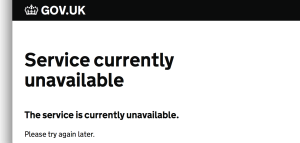The introduction of HMRC’s Making Tax Digital (MTD) for VAT programme, scheduled for April 2019, will bring a fundamental change to the way that businesses submit VAT returns. To ensure that they are able to fully comply with the new rules and to avoid potential fines for filing returns incorrectly, it is essential for organisations to start preparing now. Simon Armstrong, Senior Manager at accountancy firm, Menzies LLP, explains below.
What is MTD for VAT?
MTD is a key part of HMRC’s plan to become a world-leading digital tax authority and is applicable to all VAT schemes and registrations (such as annual, retail, flat rate or partial exemption). All businesses with a taxable turnover above the VAT registration threshold, currently set at £85,000 per annum, will be required to comply with the incoming rules. Businesses with a turnover below the threshold may also opt to file their VAT returns through MTD.
A business within the scope of MTD must use ‘functional compatible software’ to meet the new requirements. This software will allow the organisation to maintain digital business records and file relevant VAT information electronically. With HMRC yet to provide full clarity about what constitutes ‘functional compatible software’ and its capabilities, businesses will only have a short window to ensure that they are compliant.
VAT returns submitted under the MTD rules will need to include a much wider range of information than currently required. Additionally, the new rules will include a facility to submit supplementary data to HMRC, for example, additional information in support of a VAT repayment return. The expectation is that improving access to data will speed up the returns system, allowing HMRC to process VAT refunds and deal with other queries faster and more efficiently.
When will businesses need to be MTD compliant?
Businesses within the scope of MTD will need to comply with the new rules for VAT-return periods starting on or after 1 April 2019. For example, if your business submits VAT returns for calendar quarters, you will need to comply with the MTD rules for the period ending 30 June 2019 onwards.
With the UK’s departure from the EU set for March 2019, Brexit may well have an impact on the MTD timeframes, however, for the time being businesses should assume that the new rules will come into force in April 2019. From 2020, other taxes may also need to be filed digitally.
Since April 2018, HMRC has been testing its MTD portal with selected VAT-registered businesses. These trials will be expanded in the run up to April 2019 to include further businesses and software providers. Learnings from these trials will give HMRC and VAT-registered businesses a better understanding of what the ‘functional compatible software’ will look like and the options that should be available.
How should businesses prepare for MTD now?
Although April 2019 is still a year away, businesses should start preparing for MTD now to ensure that suitable software and processes are well established and any teething problems are addressed well ahead of the switch.
The first step to ensuring MTD compliance is to establish that the organisation is using an online accounting package which will be deemed ‘functional compatible software’ for MTD purposes. Where multiple software programmes are used to record VAT data, such as spreadsheets, there must be a ‘digital link’ between each piece of software.
When considering a move to an online accounting package, there are also key practical considerations, most significantly the timing of the process. As it will be most efficient to switch at the end of an accounting period, firms should prepare for the transition to a digital accounting system well ahead of their year end.
For businesses currently maintaining their VAT records using an online accounting package, this should be sufficient for MTD compliance. However, to ensure peace of mind, it is also important to speak to a third-party advisor or software provider who can confirm compliance ahead of the April 2019 deadline. This way, they will be kept up to date with key MTD developments as the April 2019 deadline draws closer, whilst allowing businesses to access the software and VAT expertise, where necessary, to move their records onto a digital platform.
Once in place, the reduced paperwork and administration associated with filing VAT returns digitally should ease pressure around tax and reporting deadlines and reduce the burden of administration. Other benefits of the programme to business owners include improved access to real-time information, aiding cash-flow planning, and more efficient processing of tax filings and related queries.
By taking steps now to learn about how to switch to a digital system and seeking specialist support, businesses can ‘future proof’ their accounting software and ensure they are fully compliant in good time.




















